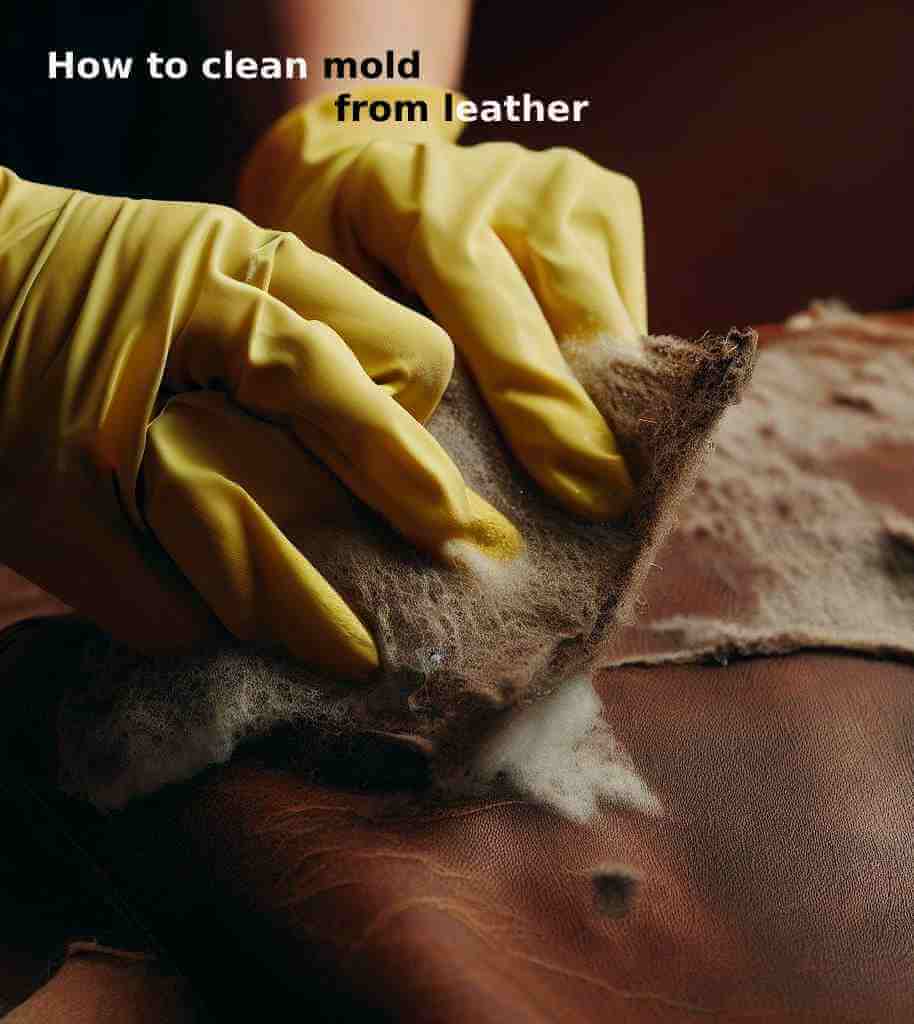Hippo Leather
The fascinating world of hippo leather, a material that boasts unique properties while being mired in controversy. Delve into its intriguing history, gain insights into its potential future, and find answers to frequently asked questions surrounding this enigmatic material.
1. What is Hippo Leather
Hippo leather, also known as hippopotamus leather, is a material that has been used for centuries to make luxury goods. As someone who has always been fascinated by the world of exotic leather. I find hippo leather to be particularly intriguing due to its unique properties and controversial past.
Hippo leather is made from the hides of hippopotamuses, which are large semi-aquatic mammals that are native to sub-Saharan Africa. These animals are known for their formidable size, with adult males weighing up to 3,000 pounds. Due to their large size and the difficulty of hunting them. Hippopotamuses have long been prized for their hides, which are processed into high-end leather products.
The use of hippo leather dates back centuries, with evidence of its use in ancient Egyptian and Roman cultures. In modern times, hippo leather has become synonymous with luxury goods. Often used to create high-end bags, shoes, and other accessories.
However, the use of hippopotamus hides for leather has become increasingly controversial in recent years. Many people argue that the practice is unethical and contributes to the decline of hippopotamus populations in certain regions. As a result, there has been growing interest in alternative materials and leather alternatives that offer similar properties to hippo leather without the ethical concerns.
In this blog post, we will explore the world of hippo leather in detail. We will examine the process of making hippo leather. The controversy surrounding its use. The unique properties of the material, and the future of hippo leather in the fashion industry. By the end of this post. You will have a deeper understanding of the history and uses of hippo leather and the current state of the industry.
2. The Process of Making Hippo Leather

When keen interest in exotic leather. I find the process of making hippo leather to be particularly fascinating. While the basic process for creating leather from any animal hide is similar. There are some unique differences when it comes to hippopotamus hides.
The first step in making hippo leather is to acquire the hides. Typically, hunters obtain hippopotamus hides as they are not farmed for this purpose. International and national laws regulate the hunting of hippopotamuses, and some countries even prohibit it altogether
Once the hides are acquired, they must be treated to prevent spoilage. This involves removing the hair and flesh from the hide and treating it with a chemical solution to prevent bacteria and fungus from growing. The hides are then tanned using a combination of natural and synthetic chemicals to create the desired texture and color.
One of the unique aspects of hippo leather is its thickness. Hippopotamus hides are incredibly thick, which makes them difficult to work with. As a result, hippo leather is typically used for products that require a durable and sturdy material. Such as bags, boots, and belts.
Hippo skin texture is Different from Alligator and Crocodile
Another unique aspect of hippo leather is its texture. Hippo skin texture has a distinctive pebbled texture that sets it apart from other exotic leathers like alligator and crocodile. This texture is created by the way the hides are treated during the tanning process.
In terms of its durability and longevity. Hippo leather is known for being incredibly tough and resistant to wear and tear. It is also naturally water-resistant, which makes it ideal for use in products that may be exposed to the elements.
However, the use of hippo leather has become increasingly controversial due to concerns about the impact of hunting on hippopotamus populations. As a result, there has been growing interest in alternative materials and leather alternatives that offer similar properties to hippo leather without the ethical concerns.
Comparison to Other Exotic Leathers
When compared to other exotic leathers like alligator and crocodile, hippo leather has some distinct differences. While all three leathers are known for their durability and unique texture. Hippo leather is significantly thicker than alligator or crocodile. This makes it ideal for products that require a sturdy and durable material.
In terms of texture, hippo leather has a distinctive pebbled texture that sets it apart from the smoother texture of alligator and crocodile. Additionally, hippo leather is naturally water-resistant. Which makes it ideal for use in products that may be exposed to the elements.
Sustainability and Conservation
As mentioned earlier, the hunting of hippopotamuses for their hides has become a controversial issue due to concerns about the impact on hippopotamus populations. As a result, there has been growing interest in sustainable and ethical alternatives to hippo leather.
Some companies are exploring the use of synthetic materials and leather alternatives that offer similar properties to hippo leather without the ethical concerns. Others are exploring the use of hides from other animals that are farmed for their hides. Like ostriches and snakes.
Overall, the process of making hippo leather is complex and requires a high level of skill and expertise. While hippo leather has unique properties that make it desirable for certain products. There are growing concerns about the ethics of using hippopotamus hides for leather. As the fashion industry continues to evolve and change. It will be interesting to see how the use of hippo leather is impacted by sustainability and conservation efforts.
3. The Benefits and Drawbacks of Using leather hippopotamus
As someone who has worked with hippo leather before, I can attest to its unique properties and benefits. However, like any material, there are also some drawbacks to using hippo leather. In this section, we’ll explore the benefits and drawbacks of using hippo leather in more detail.
Benefits of Using Nilpferd leder (Hippo Leather)
One of the main benefits of using hippo leather is its durability. Hippo leather is incredibly tough and resistant to wear and tear,. Making it ideal for products that will be used frequently or exposed to the elements. Additionally, hippo leather is naturally water-resistant, which makes it perfect for use in bags and boots.
Another benefit of hippo leather is its unique texture. The pebbled texture of hippo leather sets it apart from other exotic leathers like alligator and crocodile. This unique texture can add an interesting and distinctive element to products made with hippo leather.
In terms of its appearance, hippo leather is also known for its natural sheen and luster. When properly treated and finished, hippo leather can have a glossy finish that enhances its visual appeal.
Drawbacks of Using Hippo Leather
One of the main drawbacks of using hippo leather is its thickness. As mentioned earlier, hippopotamus hides are incredibly thick, which can make them difficult to work with. This thickness also means that products made with hippo leather can be heavier and bulkier than those made with other leathers.
Another potential drawback of using hippo leather is the ethical concerns surrounding the hunting of hippopotamuses for their hides. While the hunting of hippopotamuses is regulated by international and national laws. There are concerns about the impact on hippopotamus populations and the ethics of using their hides for fashion products.
Finally, the cost of hippo leather can also be a drawback. Due to the difficulty of working with the material and the limited supply of hippopotamus hides. Hippo leather can be quite expensive compared to other types of leather.
Overall, the benefits and drawbacks of using hippo leather depend on the specific needs and values of each individual or company. While the unique properties of hippo leather make it desirable for some. The ethical concerns and cost may outweigh the benefits for others.
Alternatives to Hippo Leather
For those who are concerned about the ethics of using hippo leather or the cost of the material. There are several alternatives to consider. Synthetic materials like PVC or PU leather can offer a similar texture and appearance to hippo leather. While also being more affordable and environmentally friendly.
Another alternative to consider is the use of hides from other animals that are farmed for their leather. Such as ostriches or snakes. These hides can offer similar properties to hippo leather, while also being more sustainable and ethical.
In conclusion, while hippo leather has unique properties that make it desirable for certain products. There are also drawbacks and ethical concerns to consider. As the fashion industry continues to evolve and prioritize sustainability and ethics. It will be interesting to see how the use of hippo leather is impacted and what alternatives emerge.
4. The Controversy Surrounding Hippo Leather
While hippo leather has its benefits. It is also a controversial material due to ethical concerns surrounding the hunting of hippos. In this section, we’ll explore the controversy surrounding hippo leather in more detail.
The Ethics of Hunting Hippos for Leather
Hunting hippos for their hides has been a tradition in many African countries for centuries, and it is still legal in some areas. However, there are concerns about the impact on hippopotamus populations and the ethics of using their hides for fashion products.
Hippos are classified as vulnerable by the International Union for Conservation of Nature (IUCN). With their population declining due to habitat loss and hunting. While some argue that hunting hippos can help control their population. Others argue that it is not a sustainable or ethical practice.
Additionally, the hunting of hippos can be dangerous and even deadly for both the hunters and the animals. Hippos are known to be territorial and aggressive. And hunting them can put people and animals at risk.
The Rise of Ethical Alternatives
In response to the controversy surrounding hippo leather, there has been a rise in the popularity of ethical alternatives. Many designers and companies are now using synthetic materials or hides from more sustainable and ethical sources, such as farmed animals.
There are also efforts to improve the sustainability and ethics of hunting hippos for their hides. Some hunters and conservationists are advocating for more responsible hunting practices. Like limiting the number of hippos that can be hunted and using the hides for conservation purposes.
However, the controversy surrounding hippo leather highlights the need for the fashion industry to prioritize sustainability and ethics in their material choices. As consumers become more aware of the impact of their purchasing decisions. It is important for companies to offer transparent and ethical options.
In conclusion, the controversy surrounding hippo leather raises important questions about the ethics of using animal hides for fashion products. While hippo leather has its benefits. the ethical concerns surrounding its production highlight the need for the fashion industry to prioritize sustainability and ethics in their material choices. As consumers, we can also make a difference by choosing to support companies that prioritize sustainability and ethical practices.
5. The Unique Properties of Hippo Leather
Hippo leather is known for its unique properties that make it a desirable material for fashion products. In this section, we’ll explore the unique characteristics of hippo leather in more detail.
Durability
One of the most notable properties of hippo leather is its durability. The thick hide of a hippo is designed to protect the animal from the harsh African environment. And it is naturally resistant to scratches and tears. This durability makes hippo leather a popular choice for high-end fashion products. Such as shoes and bags, that require materials that can withstand everyday wear and tear.
Water Resistance
Another unique property of hippo leather is its water resistance. Hippos are semi-aquatic animals that spend a lot of time in the water. And their hides have evolved to be able to withstand exposure to moisture. This water resistance makes hippo leather a popular choice for products that may be exposed to water, such as boots and jackets.
Texture and Appearance
Hippo leather has a distinct texture and appearance that sets it apart from other materials. The hide of a hippo is characterized by large, irregular wrinkles and a rough, textured surface. This texture gives hippo leather a rugged, natural look that is prized by many designers and fashion enthusiasts.
In terms of color, hippo leather is usually a shade of brown or gray. With variations in tone depending on the animal’s age and the part of the hide used. Some designers choose to leave the natural texture and color of the hide intact. While others may dye or treat the leather to achieve a specific look.
In conclusion, the unique properties of hippo leather make it a desirable material for high-end fashion products. Its durability, water resistance, and distinctive texture and appearance set it apart from other materials. However, as with any animal-derived material. The controversy surrounding its production highlights the need for the fashion industry to prioritize sustainability and ethics in their material choices.
6. The Future of Hippo Leather
As with any animal-derived material, the use of hippo leather raises ethical and sustainability concerns. In this section. We’ll explore the future of hippo leather and how these concerns are being addressed.
Sustainable and Ethical Production
In recent years, there has been a growing movement towards sustainable and ethical fashion production. This includes a focus on responsible sourcing of materials, transparency in supply chains, and reducing waste and environmental impact.
For hippo leather. This means ensuring that the hides used for production are sourced from sustainable and ethical sources. Some companies have begun to implement programs that support conservation efforts and ensure the responsible management of hippopotamus populations.
There is also a focus on reducing waste in the production process. This includes finding innovative ways to use every part of the hide and minimizing the use of chemicals in tanning and finishing.
Alternative Materials
As the fashion industry becomes more aware of the environmental impact of animal-derived materials. There has been a rise in the development of alternative materials. This includes plant-based materials. Like pineapple leather and mushroom leather, as well as synthetic materials that mimic the properties of animal hides.
While alternative materials may not have the same unique properties as hippo leather. They offer a more sustainable and ethical option for fashion production. As technology and innovation continue to develop. It is possible that these materials may one day be able to fully replace the use of animal-derived materials in the industry.
In conclusion, the future of hippo leather is closely tied to the larger movement towards sustainable and ethical fashion production. While the unique properties of hippo leather make it a desirable material for high-end fashion products. It is important to prioritize responsible sourcing and reducing waste in the production process. Additionally, the rise of alternative materials offers a promising solution for reducing the environmental impact of fashion production While still meeting the demands of consumers for unique and high-quality products.
7. Final thought
However, the use of hippo leather raises ethical and sustainability concerns. Particularly as hippopotamus populations face threats such as poaching and habitat loss. It is important for fashion companies and consumers alike to prioritize responsible sourcing. And production methods to ensure the long-term viability of hippo populations.
Furthermore, the rise of alternative materials offers a promising solution for reducing the environmental impact of fashion production. While still meeting the demands of consumers for unique and high-quality products. While these materials may not have the same unique properties as hippo leather. They offer a more sustainable and ethical option for fashion production.
As a consumer, it is important to consider the environmental and ethical impact of the products we buy. By choosing sustainable and ethical options. We can help support the conservation of threatened species like the hippopotamus and reduce the environmental impact of the fashion industry.
In conclusion, while hippo leather may offer a desirable option for high-end fashion. It is crucial to prioritize responsible sourcing and production methods . And consider alternative materials as a more sustainable and ethical option. As the fashion industry continues to evolve. It is important for us to make conscious choices as consumers to support a more responsible. And sustainable future for fashion production.
FAQ’s
What is hippo leather?
Hippo leather is a type of leather made from the skin of the hippopotamus. A large semi-aquatic mammal found in Africa.
Is hippo leather legal?
The legality of hippo leather varies by country. In some African countries where hippos are considered a pest, their meat and hides may be legally traded. However, in other countries where hippos are protected, their trade is strictly regulated or prohibited.
Why is hippo leather controversial?
A: Hippopotamus populations are threatened by habitat loss, poaching, and other factors. The use of hippo leather raises ethical and sustainability concerns. Particularly as hippos are not raised on farms like cattle or other livestock.
Is hippo leather sustainable?
The sustainability of hippo leather is questionable. As hippos are not typically raised on farms and their populations are threatened. Additionally, the tanning process for leather can be environmentally harmful if not conducted responsibly.
What are the unique properties of hippo leather?
Hippo leather is known for its durability, strength, and distinctive texture and color. It is also resistant to water and abrasion.
Are there alternatives to hippo leather?
Yes, there are many alternative materials to hippo leather that offer similar properties. Like synthetic leathers made from plant-based or recycled materials, or other exotic leathers such as ostrich or alligator.
Can I buy products made from hippo leather?
The availability of products made from hippo leather may vary by region and local regulations. However, it is important to consider the ethical and sustainability implications of buying products made from endangered species before making a purchase.
Is hippo leather expensive?
Hippo leather enthusiasts consider it a luxury material and typically price it higher than other types of leather
How is hippo leather tanned Industrially?
Typically tanned using vegetable or chrome tanning methods. Which involve treating the animal hides with natural or synthetic chemicals to preserve and soften the leather.
What products are typically made from hippo leather ?
We can make a variety of products. Including shoes, belts, bags, and other small leather goods.
Are there any cultural or historical significance to the use of hippo leather?
Historically, hippo leather was used by some African cultures to make clothing and other goods. Today, its use is primarily limited to luxury goods and high-end fashion.
How can I tell if a product is made from hippo leather?
Hippo leather can vary in texture and appearance. But it typically features a distinct pebbled pattern and a deep, rich color.
However, it can be difficult to distinguish from other types of exotic leather. It is important to carefully check product labels and ask questions about the materials used before making a purchase.



Pingback: Pirarucu Leather: Unveiling the Exotic Elegance of Amazon's Finest
Attractive section of content. I just stumbled upon your
site and in accession capital to assert that I acquire in fact enjoyed account your blog posts.
Anyway I will be subscribing to your feeds and even I achievement you access
consistently rapidly.
Pingback: Is Louis Vuitton real leather?